Cape Town, Namaqualand and Stellenbosch
Notes on the MPG visit to South Africa, 24 August – 6 September 2015
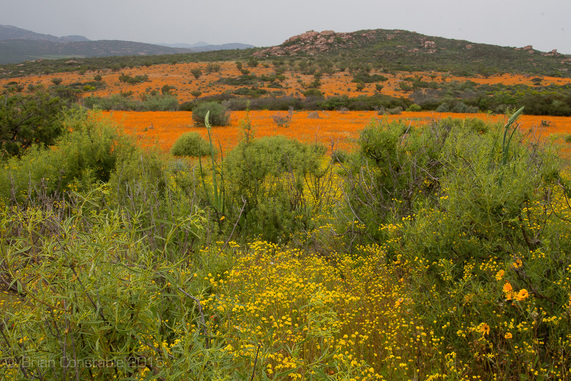
Namaqualand
SUMMARY
During 11 days 19 of us saw the main flora of the Cape in its early spring glory.
* Six national parks or nature reserves and three other distinct natural areas
* Three botanical gardens
* Four gardens, a nursery, a flower show
We mostly saw fynbos (pronounced faynboss) fine-leaved plants in three main families: Proteaceae – 387 species; Ericaceae – 682 species; Restionaceae – 314 species, plus a vast array of neophytes (2,200 species in the Cape) notably Iridaceae. All survive in a generally dry climate on stony ground with some winter and spring rain. Various factors have contributed to this astonishing diversity developed over many millennia including geology, climate, fire, and no ice age. Animal seed dispersal has helped speciation as plants adapted to evolving environments.
The dates were chosen to give the best chance of seeing the spring flowering of the northern Cape area. It is not quite the ideal time to see gardens as they are only just emerging from winter. Vineyard and camellia gardens were exceptions.
THE TRIP
Monday 24 August – cloudy, cool
The Vineyard, Newlands, Cape Town
Our hotel was a restored country villa built in 1799, with wonderful views of Table Mountain and delightful gardens reaching the river. Although not part of the tour proper, this pre-tour day gave our early arrivals the opportunity to make precious first contact with the Cape Horticultural Society (CHS).
Charles and Jennie Smith, Barbara Jones and Richard Barrett met CHS members at Arderne Gardens public park and arboretum:
Glenda Thorpe, Henry Diesveld, Hank Lith, Errol and Jenny Scarr, Michael Tuffin (chair). The generally level 5-hectare garden is open to the public but until the Friends of the Arderne Gardens was formed it was a no-go area with much illegal activity. With small grants, FOTAG has transformed its accessibility and public use, and the work continues, particularly the protection of outstanding ancient trees. Hank explained its original creation in 1845 and how the southern hemisphere tree collection mirrored the arrival and dispersal of the tree species of Gondwanaland 200 million years ago when the land masses of Africa, Australia, India, Antarctica and South America were joined.
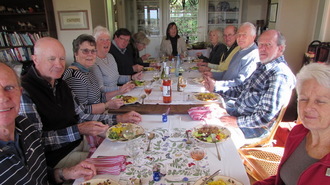
Then we met Jane Robertson, a CHS member who gardens on a steep, terraced slope, mainly using indigenous species. Other CHS members joined for an informal lunch, followed by Stellenberg Gardens where owner and garden designer Sandy Ovenstone, also a CHS member, took us around her outstanding four-acre garden on a gently sloping site, a work in progress over 30 years. We enjoyed tea in the impressive historic Cape Dutch house.
Tuesday 25 August – rain overnight, brightening
Company’s Garden and Table Mountain
The main group arrived and after a sunshine lunch joined the optional coach trip to Cape Town city, meeting Erica (tour guide) and Herman (driver). Important buildings were ticked off followed by a walk through Company’s Garden, where during the 18th and 19th century vegetables and fruit were grown to provision passing ships. Fortunately the spring sunshine had cleared Table Mountain of its ‘tablecloth’ and the cable car flew us up 700m in seven minutes.
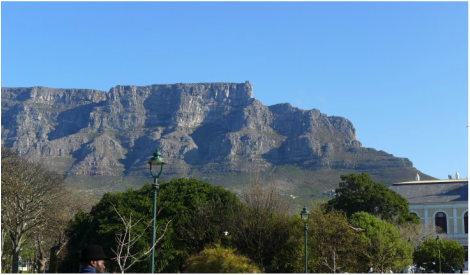
Tabletop mountain
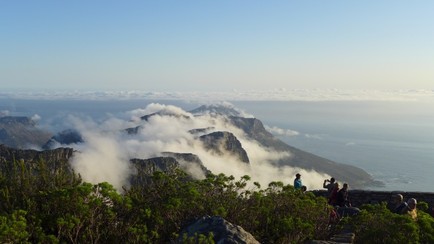
The tablecloth rises
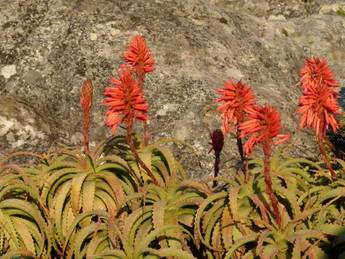
Aloe arborescens
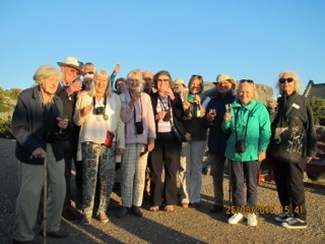
Champers at the top
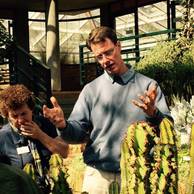
Wednesday, 26 August – sunny, mild
Kirstenbosch National Botanical Garden
Sometimes called ‘the most beautiful garden in Africa’, and a Unesco World Heritage Site of 80 acres within an 1,100 acre estate. Kirstenbosch was a wonderful first contact with Cape flora (7,000 species in cultivation) initially from a detailed introductory talk and tour by Adam Harrower (left), a young botanist, concentrating on plants we would see as we travelled north; many thrive here thanks to an open-sided conservatory to protect them from the high rainfall on the east side of Table Mountain. It was already obvious that it would take a lifetime of study to know the flora, so vast is the range, with the rate of discovery of new species not having slowed since it began in the 18th century.
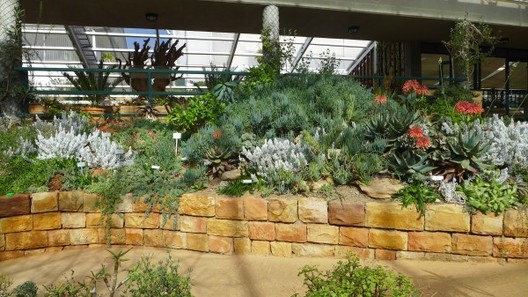
Kirstenbosch conservatory
We had a huge lunch in the restaurant, and time to wander in the grounds in their great variety, including: koppie (sandstone outcrop) with Pelargonium Garden (almost all the world’s Pelargonium species are South African in origin); the Cycad Amphitheatre displaying this plant group from deep history; Mathews Rockery with succulents and bulbs from dry areas; Vygies (members of the Mesembryanthemaceae) and annuals providing our first exposure to the explosion of colour we were to see in the northern Cape; Erica Garden – a selection from over 600 species; the Protea Garden with the pincushions in flower, including the king protea (Protea cynaroides).
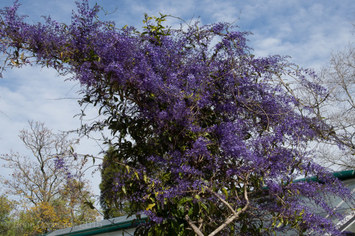
Petrea volubilis
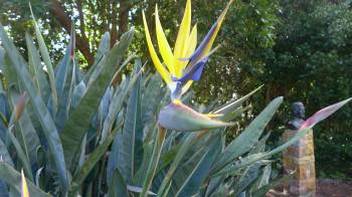
Strelitzia ‘Mandela’s Gold’
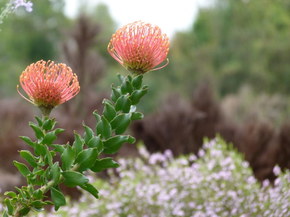
Leucospermum hybrid
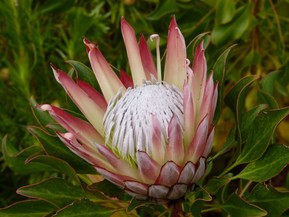
Protea cynaroides
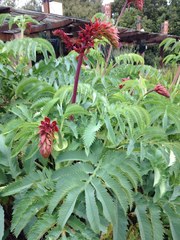
Melianthus major
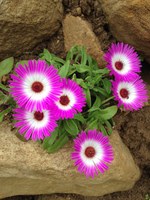
Vygie
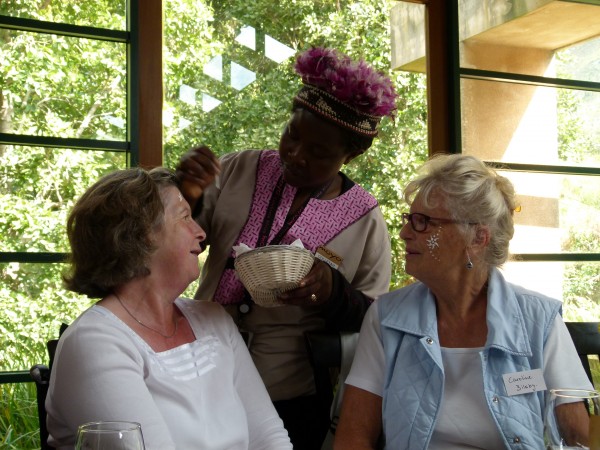
Face painting at lunch
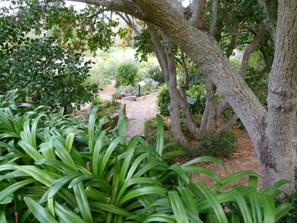
The waterwise garden
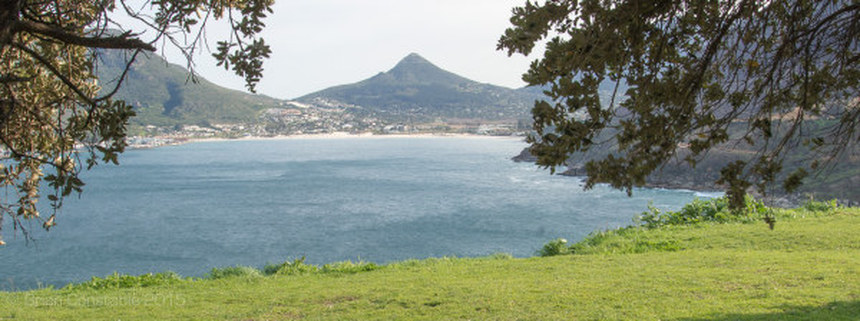
Cape peninsula
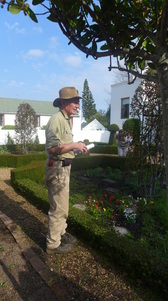
Niall Mackrill
Thursday 27 August – sunny, mild
Cape Point Nature Reserve
The coastal drive was spectacular, our first contact with natural fynbos – literally “thin leaves” – shrubby growth on rough ground with Proteaceae, Ericaceae and Restionaceae. These were some of the first in flower and the latter, Cape reeds, were showing feather-headed clumps. We saw eland, bontebok and ostrich, with clouds of cormorants skimming the waves around the lighthouse.
After a late lunch at Kalk Bay almost sitting in the waves, watching the seals, hoping for whales but no luck today, we drove through Simonstown and Muizenberg to Cellars Hohenort Hotel and a tour of its lovely gardens by the hugely knowledgeable Niall Mackrill. Here is a clever blend of large or intimate formal gardens plus natural areas overlooking vineyards. We were delighted that Errol and Jenny Scarr from CHS joined us for drinks and dinner. Their plant knowledge proved to be hugely valuable.
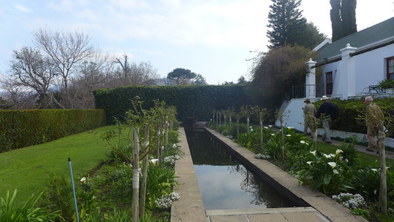
Cellars Hohenort Hotel garden
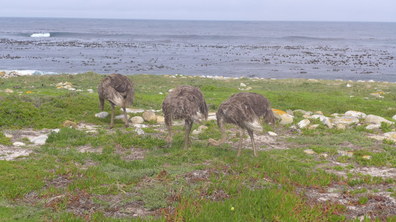
Ostrich
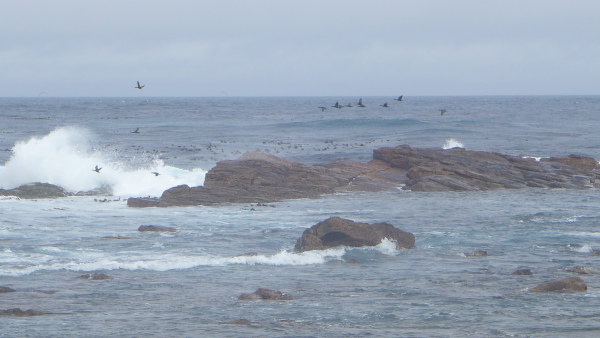
Cormorants skimming the water
Friday 28 August – cloudy, cool
Nieuwoudtville, Clanwilliam and Vanrhynsdorp
A long drive to Namaqualand in the northern Cape throughout mostly empty countryside, much of it infertile with classic Cape mountains, vertiginous faces of sheer rock rearing to over 2,000m. Daisies appeared first, then bulbs.
Ramskop Nature Reserve – 150 acres, and a self-guided tour of well labelled succulents, overlooking the Clanwilliam dam. By now we were beginning to get the measure of the vast array of succulent forms, if not their names. We stopped briefly at a Vanrhynsdorp nursery for a close viewing of the tiny ‘boudjies’ (meaning baby bottoms in Afrikaans), thumb-nail-sized succulents from the wild Knersvlatke Plains (named from the sound of ox wagons grinding their way over the quartz pebbles). Arrangements were complicated in the two guest houses, dinner was separate, and fortunately we were here for two nights at the Swiss Villa and Delande Guest Houses.

At the roadside overlooking Clanwilliam dam
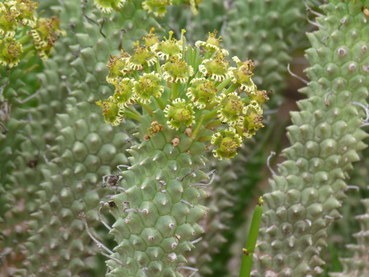
Euphorbia tuberculata
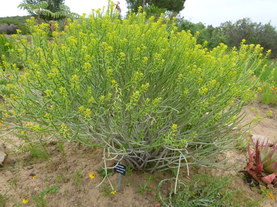
Euphorbia mauritanica
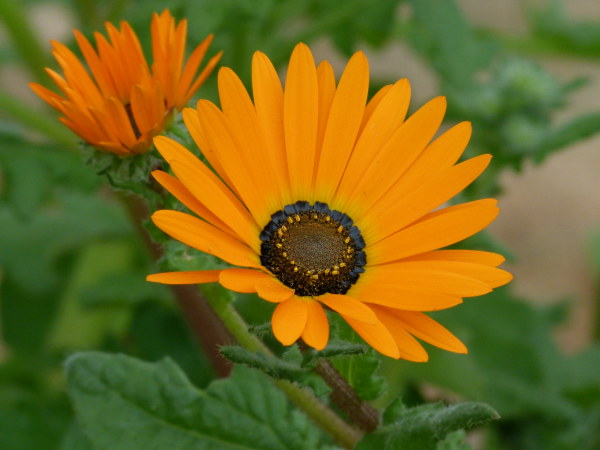
Arctotis hirsuta

Vanrhynsdorp nursery
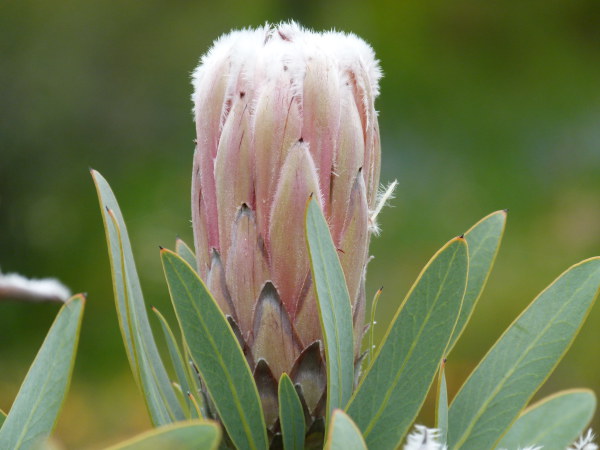
Protea laurifolia
Saturday 29 August – misty, cool, warmer later
Nieuwoudtville
It’s hard to encapsulate the sheer variety of our Nieuwoudtville (‘Bulb capital of the World’) day. This is not one area but several, each altered by changes in farming practice. Even a road can make a difference: a haze of yellow and white one side, blue and pink the other. Our first visit was Quiver Tree Forest (Aloe dichotoma), succulent ‘trees’ up to 4m, named for their use by the San people who created arrow holders from the light fibrous stems. Other small delicate flowering succulents grow in the arid rock and sand below.
Waterfalls next, and a dramatic gorge with a 60m fall from the sandstone lip, preceded by water loving plants in the shallows and surrounded by huge rocks, aloes and fynbos. We spent the afternoon with Willem van Wyk, retired farmer, touring his land (15,000 acres, now a ‘small’ farm!) in open Land Rovers with frequent stops to appreciate his huge erudition and love of the landscape. Many rated this the most enjoyable day of the entire holiday.
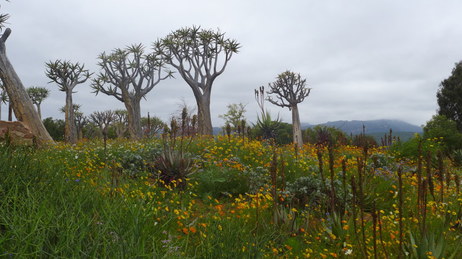
Aloe dichotoma
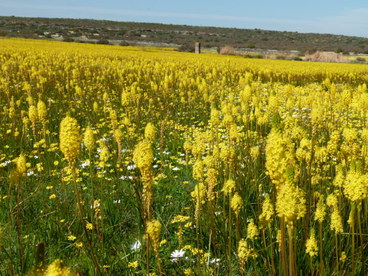
Bulbinella nutans
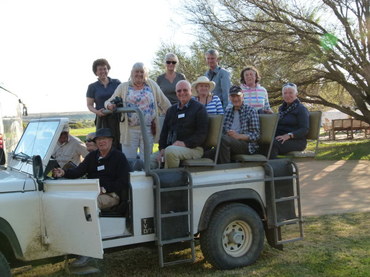
Our farm transport
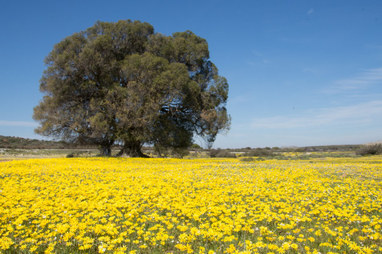
Daisies on the farm
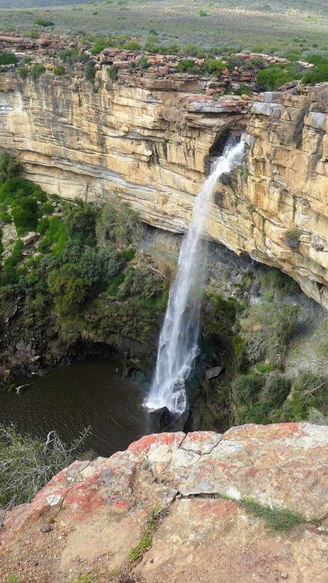
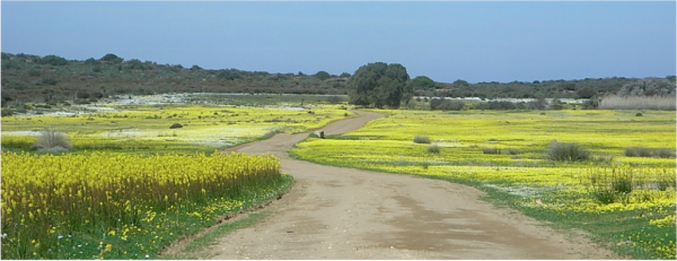
Farm of Willem van Wyk
Sunday 30 August – light rain, clearing later
Namaqualand National Park
A long drive back to Kamieskroon, then 20km of corrugated dirt road to reach Namaqualand National Park. Acres upon acres of orange daises, which tended to be taken for granted after a while, until we arrived at the areas of mixed colours. The spectacle matched all the previously seen publicity. The whole area feels remote and uninhabited, with a tourist season lasting only two months. Occasional windmill-driven pumps provide irrigation. ‘Succulent Karoo lamb’ is farmed at acres to the sheep not sheep to the acre. Copper mining, now in decline, provided employment in the past. We stayed at Daisy Lodge and Kleinplasie Guest Houses, Springbok.

Namaqua national park
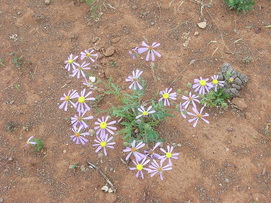
Zaluzianskya stricta
Monday 31 August – sunny, warm
From Springbok to Goegap Nature Reserve then Clanwilliam
A pleasant start in a Springbok book/gem store with many adding to their plant identification collection, then a short drive to Goegap Nature Reserve with the Hester Malan Succulent Collection. Here was rugged, arid landscape with quiver trees, daisies and the odd dassie or hyrax (Procavia capensis). Other animals spotted included oryx, baboons and a springbok crossing in front of the bus. Much bird spotting too. Long drive to Clanwilliam where the group stayed at the Blommenberg and Yellow Aloe Guest Houses.

Cordon royenii
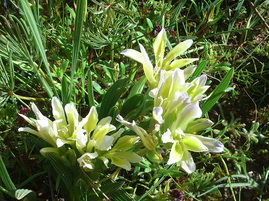
Babiana mucronata
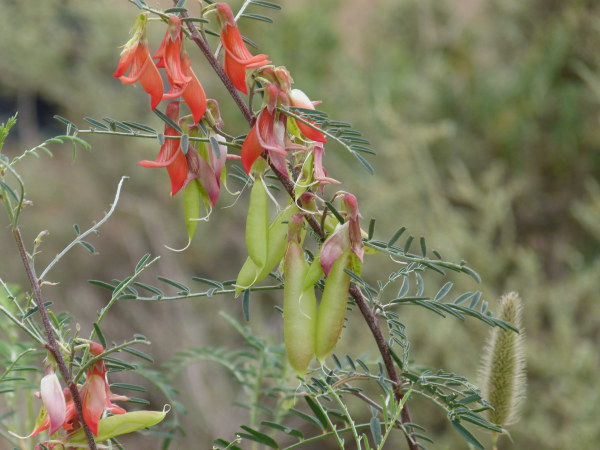
Sutherlandia frutescens
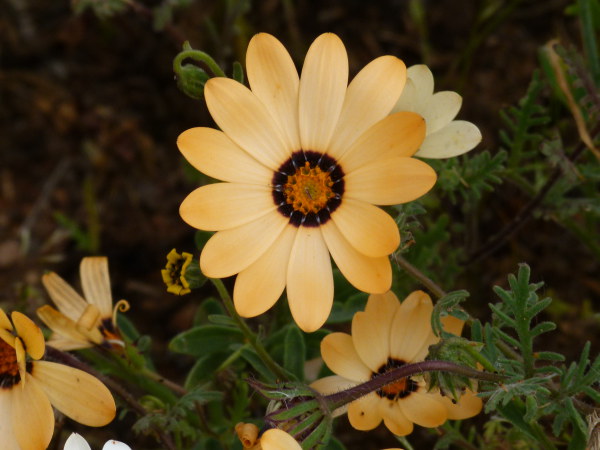
Dimorphotheca tragus
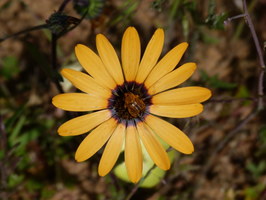
Osteospermum oppositifolum
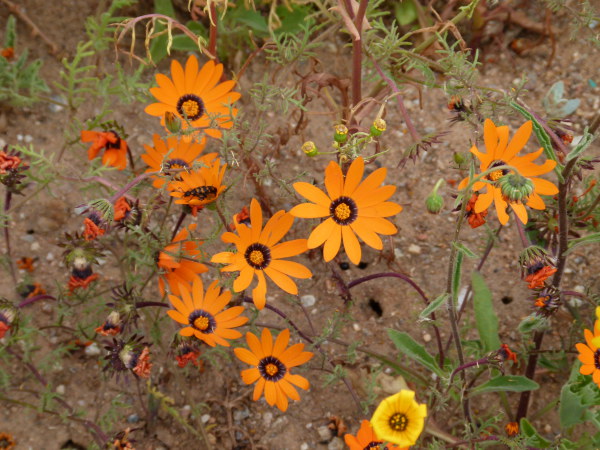
Ursinia calenduliflora
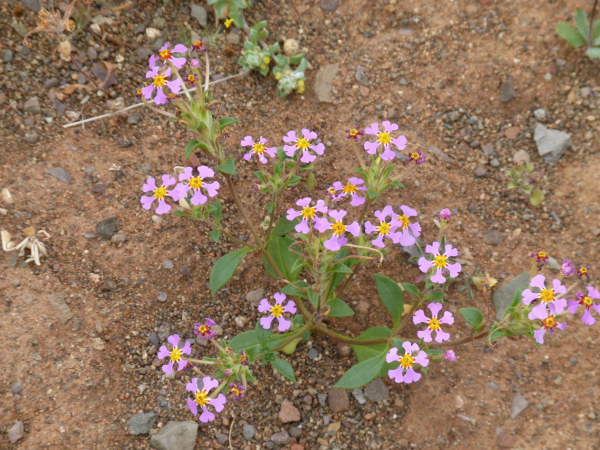
Zaluzianskya affinis
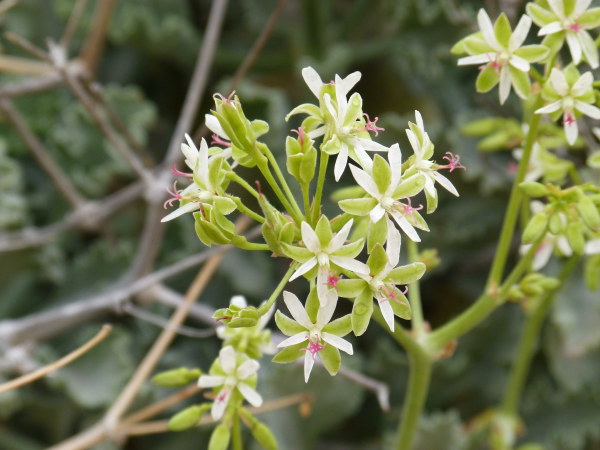
Pelargonium klinghardtense
Tuesday 1 September – sunny, warm
Clanwilliam Flower Festival and Paternoster
A quick look at the quilt exhibition in the old gaol was followed by the astonishing Clanwilliam Flower Festival in a redundant church. This is a truly remarkable effort for a small community. A series of miniature high quality display gardens each representing the major fynbos areas in separate sections enabled us to identify many plants in their context, including those not yet seen. A back room contained named samples of all species currently in flower in their botanical groups; again helpful. A rooibos tea tasting was enjoyed by most of us – having seen it growing it was interesting to hear how it was harvested, processed and marketed.
A long drive with more flowers to the Atlantic Coast and the waves pounding on the beach resort of Paternoster with millions of mussel shells on the tideline. Finally an amazing meal at the Ah guesthouse, cooked by Arnold.
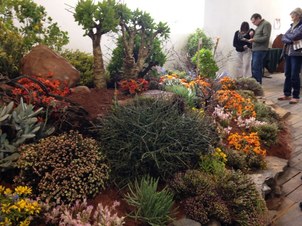
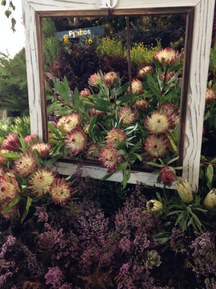
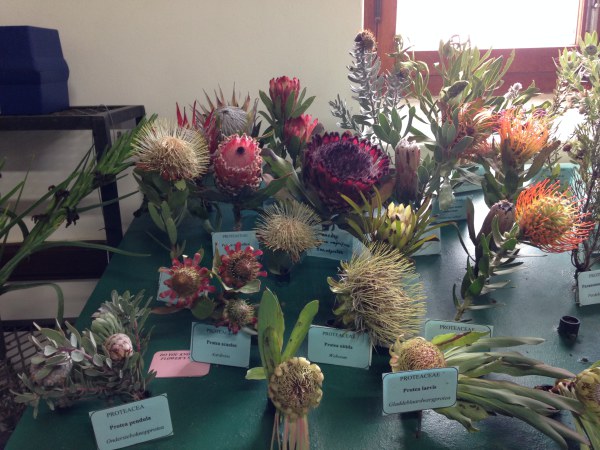
Wednesday 2 September – sunny, warm
Postberg Nature Reserve, Langebaan, and on to Stellenbosch
We drove through designer concrete beach homes to Langebaan Lagoon, a vast stretch of tidal water 27km long, up to 4km wide, hosting flamingos and other waders, and on through the West Coast Park to Postberg Nature Reserve. We found acres of flowers (best for many years) plus kudu, zebra, eland and ostrich. Kelp forests danced in the open sea. Arum lilies (Zantedeschia aethiopica) fringed the road through the wine fields of Darling, and on to the delightful university town of Stellenbosch.
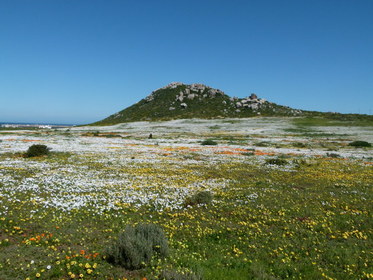
Postberg nature reserve
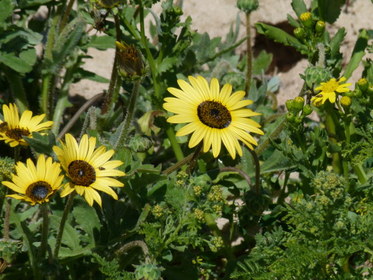
Arctotheca calendula
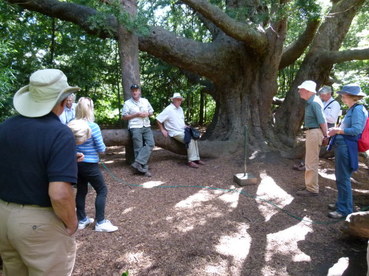
800 year old Podocarpus latifolius
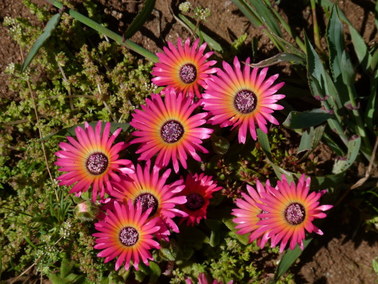
Dorotheanthus bellidiformis
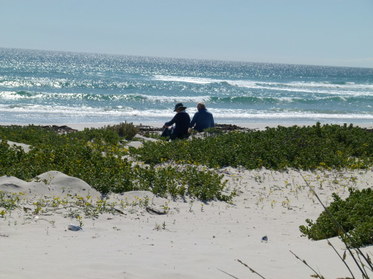
Picnic at Elands Bay amongst the Arctotheca
Thursday 3 September – sunny, warm
Trees at Vergelegen Wine Estate and Stellenbosch Museum
A short drive to the famous Vergelegen Wine Estate: Wine tasting was followed by a two-hour guided tour through formal areas, and on to champion trees (camphor: Cinnamomum camphora), a 300-year-old English oak (Quercus rubra) planted for barrel making but useless in this climate as they grow too quickly, the Royal Oak (from a Blenheim acorn) visited by various UK Royals. Yellow wood trees (Podocarpus latifolius) were used by early settlers for spars and furniture to the point where no aged specimens remain (unless remote), barring a contorted example here (lightning strike?) now surrounded by its progeny. Finally, the camellias of which they have 1,000, many still in flower – they drop their bloom before going brown so the trees are extremely elegant. We lunched in Camphors Restaurant and returned to Stellenbosch for a tour of the Dutch Museum Houses
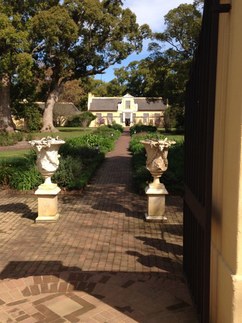
Vergelegen
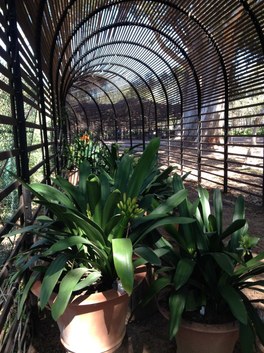
Babylonstoren Clivia collection
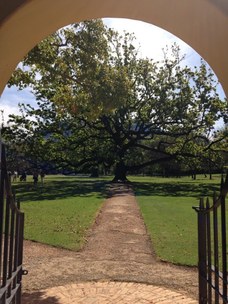
The royal oak
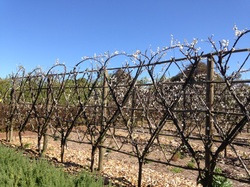
Espaliers at Babylonstoren
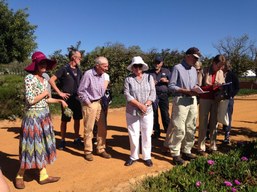
Gundula with some of the group
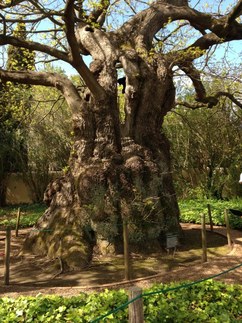
Cinnamomum camphora
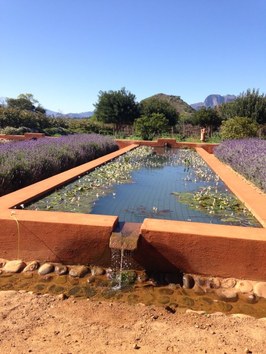
One of the fishponds housing tilapia
Friday 4 September – sunny, warm
Babylonstoren and Old Nectar
Gundula, who once worked at Sparoza near Athens, was our guide. She concentrates on edible plants on this huge, experimental site. It is impossible to convey the range of ideas: structures, pest control through plants, espalier trees, edible water lily, and tests on a wide variety of cacti. We marvelled at the huge investment in irrigation rills.
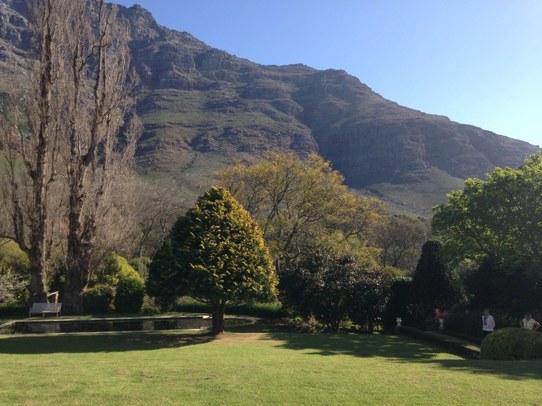
View from Old Nectar
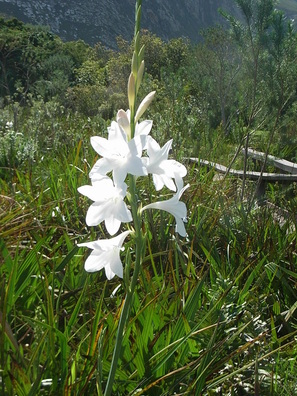
Gladiolus carneus
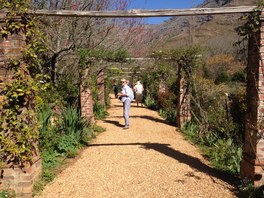
Entering the garden
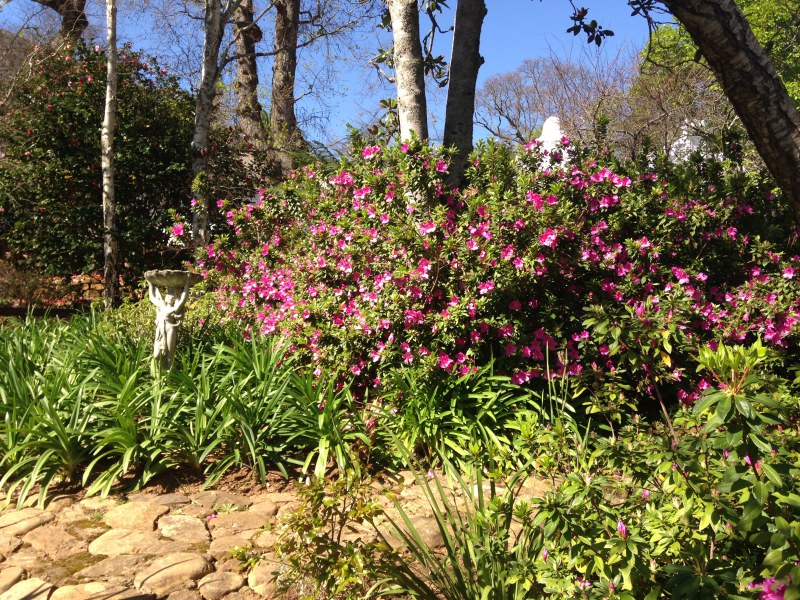
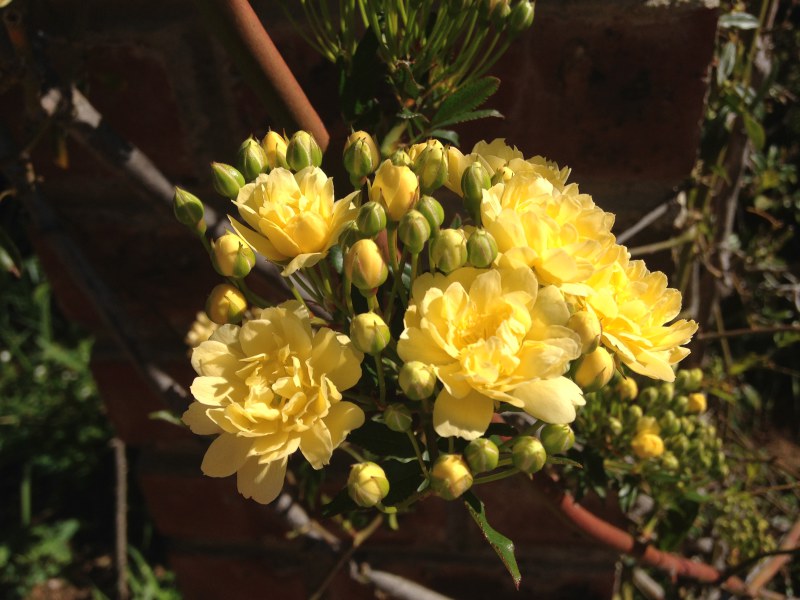
Rosa banksiae ‘Lutea’
We passed through wine estates with mountains towering above to Old Nectar, home of the late Una van der Spuy, the doyenne of Cape gardening who died in 2012, three days short of her 100th birthday. The Old Nectar gardens, on a steep slope facing the mighty Jonkershoek Mountain, nearing the end of a massive renovation, reopening to the public in October 2015. We were fortunate to have an afternoon peep as the team had knocked off for the weekend, escorted by a local resident horticulturalist, and a long-standing staff member. Multiple levels displayed a wide choice of plants plus formal areas broken up by rills, ponds and extensive paths.
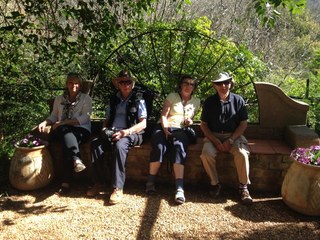
A cool spot to rest with our guide, Erica (far left)

View across a rill
Saturday 5 September – warm, sunny
Betty’s Bay and the Harold Porter National Botanical Garden
We enjoyed the dramatic coastal drive to Betty’s Bay and the penguin colony with a vast number of birds, easily accessible via a long boardwalk suspended over their burrows. They live in harmony with dassies.
Our final stop was the Harold Porter Garden where Billy our guide gave us a wonderful two hours of not just his extensive plant knowledge but also his expertise in how plants, animals, insects and birds interact. The reserve was the creation of one man, later given to the state. It’s quite like Kirstenbosch but on a smaller scale, with well labelled areas rising to ravines and waterfalls, but coastal, so offering a different flora range.
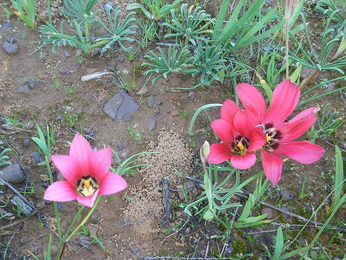
Romulea monodelpha
Our final stop was the Harold Porter Garden where Billy our guide gave us a wonderful two hours of not just his extensive plant knowledge but also his expertise in how plants, animals, insects and birds interact. The reserve was the creation of one man, later given to the state. It’s quite like Kirstenbosch but on a smaller scale, with well labelled areas rising to ravines and waterfalls, but coastal, so offering a different flora range.
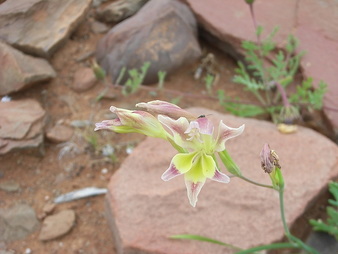
Gladiolus venustus
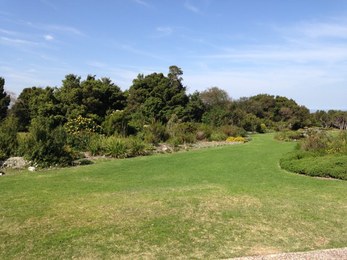
Harold Porter garden
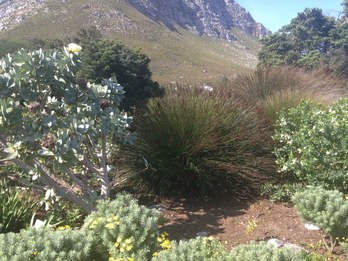
Protea nitida (left), used for tanning leather
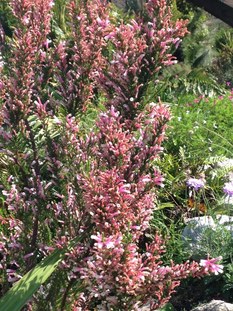
Erica perspicua
Warm thanks to Glenda Thorpe and the other Cape Horticultural Society members who welcomed our vanguard group so warmly.
Text: Charles Smith
Illustrations: Faith Butt, Caroline Bilsby, Brian Constable, Ann Maine, Jennie Smith, Glenda Thorpe, Susie Warwick
More images can be found in the gallery.

